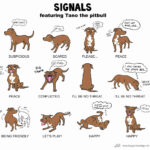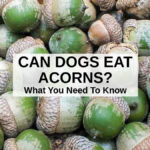Why Is Bacon Bad For Dogs
Bacon is a beloved breakfast food for many people around the world, but have you ever wondered if it’s safe for your furry friend to indulge in this savory treat? Unfortunately, bacon is bad for dogs and can cause serious health problems. In this article, we’ll explore why bacon is harmful to dogs and what you can do to keep your pet healthy.
Why is Bacon Bad for Dogs?
Bacon is high in fat, salt, and calories, which makes it an unhealthy food choice for both humans and animals. Dogs are not able to digest fatty foods as well as humans, and too much fat in their diet can lead to pancreatitis – a painful inflammation of the pancreas. Pancreatitis can cause vomiting, diarrhea, abdominal pain, and even death in severe cases.
Furthermore, bacon contains a high amount of salt, which can cause dehydration and electrolyte imbalances in dogs. Excessive salt intake can also lead to high blood pressure and kidney damage over time. In addition, the preservatives used in bacon such as nitrates and nitrites have been linked to cancer in humans. While there isn’t enough evidence to prove that these chemicals are harmful to dogs, it’s best to err on the side of caution.
Subtitles:
1. The Dangers of Excessive Fat Intake
2. The Salt Factor: Dehydration & Electrolyte Imbalances
3. Preservative Concerns: Nitrates & Nitrites
What Happens If My Dog Eats Bacon?
If your dog accidentally eats a small piece of bacon or other fatty food, they may experience mild gastrointestinal upset such as vomiting or diarrhea. However, if your dog consumes a large amount of bacon or regularly eats fatty foods like bacon, they are at risk for developing more serious health issues such as pancreatitis.
Symptoms of pancreatitis include vomiting, diarrhea, loss of appetite, dehydration, abdominal pain/tenderness, fever, and lethargy. If you suspect that your dog has pancreatitis, it’s important to seek veterinary attention immediately. Your vet may recommend hospitalization, IV fluids, pain management, and a low-fat diet to help manage your dog’s symptoms.
Subtitles:
1. Mild Gastrointestinal Upset
2. Serious Health Concerns: Pancreatitis
3. Recognizing the Symptoms of Pancreatitis
What Are Some Healthy Alternatives to Bacon?
If you’re looking for a healthy snack or treat for your dog, there are plenty of options available that won’t harm their health. Some good alternatives to bacon include:
1. Lean meats such as chicken or turkey
2. Fruits and vegetables like apples, carrots, and sweet potatoes
3. Low-fat dairy products like plain yogurt or cottage cheese
4. Commercially available dog treats made with wholesome ingredients
It’s always important to read the label and check with your vet before giving your dog any new food or treat.
Subtitles:
1. Lean Meats: A Healthy Protein Source
2. The Benefits of Fruits & Vegetables
3. Dairy Products: Protein & Probiotics
4. Commercial Treats: Reading Labels & Checking Ingredients
Conclusion
While it may be tempting to share a piece of bacon with your furry friend, it’s best to avoid this fatty food altogether. Bacon is bad for dogs and can lead to serious health problems such as pancreatitis, dehydration, and electrolyte imbalances. Instead, opt for healthy alternatives such as lean meats, fruits and vegetables, low-fat dairy products, or commercially available dog treats made with wholesome ingredients.
Remember to always consult with your veterinarian before making any changes to your dog’s diet or feeding routine. With proper care and nutrition, you can help keep your furry friend happy and healthy for years to come!
Jokes:
1. “Why did the dog refuse bacon? He was watching his cholesterol.”
2. “What do you call a dog that eats too much bacon? A porker spaniel!”
3. “Why did the bacon cross the road? To get to the other side – and make your dog sick!”
(Note: These jokes are not meant to trivialize the serious health concerns associated with feeding dogs bacon.)



